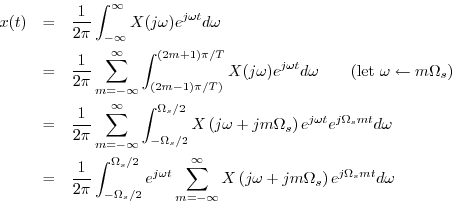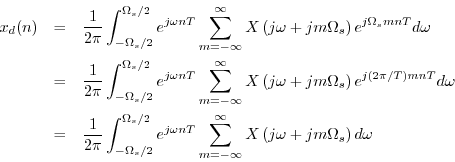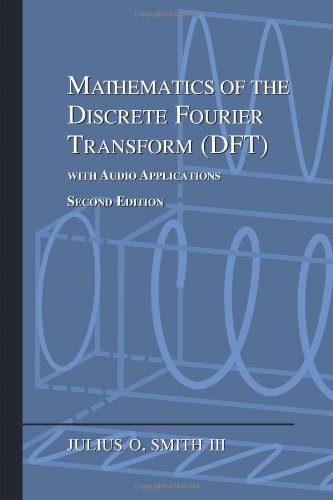Aliasing of Sampled Signals
This section quantifies aliasing in the general case. This result is then used in the proof of the sampling theorem in the next section.
It is well known that when a continuous-time signal contains energy at
a frequency higher than half the sampling rate ![]() , sampling
at
, sampling
at ![]() samples per second causes that energy to alias to a
lower frequency. If we write the original frequency as
samples per second causes that energy to alias to a
lower frequency. If we write the original frequency as
![]() , then the new aliased frequency is
, then the new aliased frequency is
![]() ,
for
,
for
![]() . This phenomenon is also called ``folding'',
since
. This phenomenon is also called ``folding'',
since ![]() is a ``mirror image'' of
is a ``mirror image'' of ![]() about
about ![]() . As we will
see, however, this is not a complete description of aliasing, as it
only applies to real signals. For general (complex) signals, it is
better to regard the aliasing due to sampling as a summation over all
spectral ``blocks'' of width
. As we will
see, however, this is not a complete description of aliasing, as it
only applies to real signals. For general (complex) signals, it is
better to regard the aliasing due to sampling as a summation over all
spectral ``blocks'' of width ![]() .
.
Continuous-Time Aliasing Theorem
Let ![]() denote any continuous-time signal having a Fourier
Transform (FT)
denote any continuous-time signal having a Fourier
Transform (FT)


![$\displaystyle X_d(e^{j\theta}) = \frac{1}{T} \sum_{m=-\infty}^\infty X\left[j\left(\frac{\theta}{T}
+ m\frac{2\pi}{T}\right)\right].
$](http://www.dsprelated.com/josimages_new/mdft/img1788.png)
Proof:
Writing ![]() as an inverse FT gives
as an inverse FT gives


The inverse FT can be broken up into a sum of finite integrals, each of length
![]() , as follows:
, as follows:

Let us now sample this representation for ![]() at
at ![]() to obtain
to obtain
![]() , and we have
, and we have

since ![]() and
and ![]() are integers.
Normalizing frequency as
are integers.
Normalizing frequency as
![]() yields
yields
![$\displaystyle x_d(n) = \frac{1}{2\pi}\int_{-\pi}{\pi} e^{j\theta^\prime n}
\f...
...t(\frac{\theta^\prime }{T}
+ m\frac{2\pi}{T}\right) \right] d\theta^\prime .
$](http://www.dsprelated.com/josimages_new/mdft/img1800.png)
Next Section:
Sampling Theorem
Previous Section:
Introduction to Sampling



















